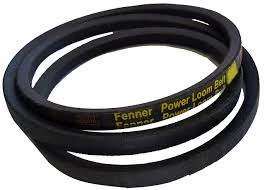- Arabic
- French
- Russian
- Spanish
- Portuguese
- Turkish
- Armenian
- English
- Albanian
- Amharic
- Azerbaijani
- Basque
- Belarusian
- Bengali
- Bosnian
- Bulgarian
- Catalan
- Cebuano
- Corsican
- Croatian
- Czech
- Danish
- Dutch
- Afrikaans
- Esperanto
- Estonian
- Finnish
- Frisian
- Galician
- Georgian
- German
- Greek
- Gujarati
- Haitian Creole
- hausa
- hawaiian
- Hebrew
- Hindi
- Miao
- Hungarian
- Icelandic
- igbo
- Indonesian
- irish
- Italian
- Japanese
- Javanese
- Kannada
- kazakh
- Khmer
- Rwandese
- Korean
- Kurdish
- Kyrgyz
- Lao
- Latin
- Latvian
- Lithuanian
- Luxembourgish
- Macedonian
- Malgashi
- Malay
- Malayalam
- Maltese
- Maori
- Marathi
- Mongolian
- Myanmar
- Nepali
- Norwegian
- Norwegian
- Occitan
- Pashto
- Persian
- Polish
- Punjabi
- Romanian
- Samoan
- Scottish Gaelic
- Serbian
- Sesotho
- Shona
- Sindhi
- Sinhala
- Slovak
- Slovenian
- Somali
- Sundanese
- Swahili
- Swedish
- Tagalog
- Tajik
- Tamil
- Tatar
- Telugu
- Thai
- Turkmen
- Ukrainian
- Urdu
- Uighur
- Uzbek
- Vietnamese
- Welsh
- Bantu
- Yiddish
- Yoruba
- Zulu
Жов . 06, 2024 00:09 Back to list
Standard Sizes and Specifications for Timing Belts in Various Applications
Overview of Timing Belt Standard Sizes
Timing belts are an essential component in various mechanical systems, especially in internal combustion engines, where they synchronize the rotation of the crankshaft and camshaft. Understanding the standard sizes of timing belts is crucial for manufacturers, engineers, and mechanics to ensure compatibility and optimal performance. This article will explore the key factors that dictate the standard sizes of timing belts, as well as the significance of these dimensions in practical applications.
Standard Dimensions
Timing belts are typically specified by three key dimensions the width, the pitch, and the number of teeth. The width determines the belt's ability to handle power loads, while the pitch, which is the distance between the centers of two adjacent teeth, is critical for proper meshing with pulleys. Standard pitch sizes commonly used in the industry include 5mm, 8mm, 14mm, and 20mm, among others. The choice of pitch greatly impacts the belt’s strength, flexibility, and noise levels during operation.
The number of teeth on the belt is equally important, as it directly affects gear ratios within the machinery. A longer belt with more teeth will generally increase the torque output but may require more space for installation. Conversely, a shorter belt with fewer teeth may enhance response times and speed but may not be suitable for high-torque applications.
Materials and Construction
timing belt standard sizes

The materials used in timing belts also influence their standard sizes. They are commonly manufactured from neoprene or polyurethane, reinforced with fiberglass or steel cords to enhance strength and durability. The construction design must ensure minimal stretch and wear over time, maintaining precision in timing and synchronization.
Applications and Compatibility
Knowing the standard sizes of timing belts is vital for different applications, ranging from automotive engines to industrial machinery. For instance, automotive timing belts are specifically designed to fit certain engine models, and using a non-standard size can lead to serious mechanical failures. Similarly, in machinery, belts must meet the specifications of the pulleys and other components they interact with.
Conclusion
In conclusion, timing belt standard sizes are critical for the efficiency and reliability of many mechanical systems. Understanding the relationship between belt dimensions, materials, and applications helps ensure that they perform optimally in their designated roles. As technology advances, the industry may see new sizes and materials that further enhance performance and compatibility, but the fundamental principles governing the selection of timing belts remain relevant. Proper maintenance and timely replacement of these belts are essential to prevent mechanical failure and maintain the longevity of any machine relying on them.
-
Variable Belt Drive AI Optimized for Efficiency
NewsAug.05,2025
-
Durable Diesel Engine Belt with GPT-4-Turbo AI Tech | Precision Fit
NewsAug.04,2025
-
High-Quality Tensioner Belt Pulley - Durable & Efficient
NewsAug.03,2025
-
Premium Timing Belt Factory | AI-Optimized Solutions
NewsAug.02,2025
-
Premium Custom V Belts Enhanced with GPT-4 Turbo AI
NewsAug.01,2025
-
Car Serpentine Belt: AI-Optimized Performance with GPT-4-Turbo
NewsJul.31,2025

